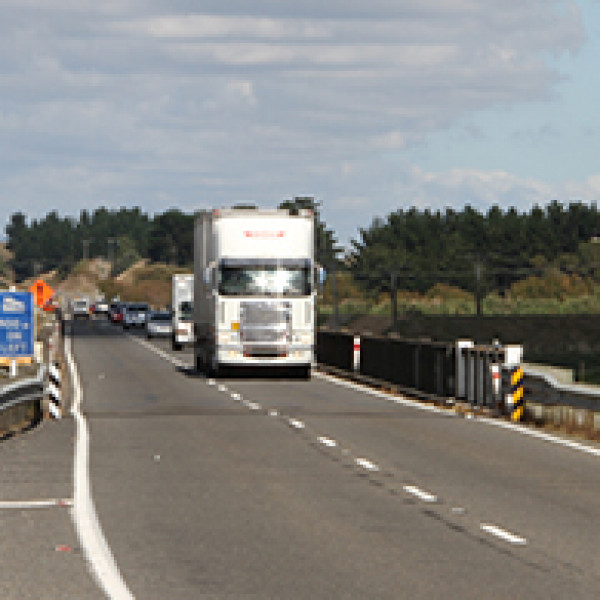
Waka Kotahi NZ Transport Agency managed the design and construction of the replacement Whirokino Trestle and Manawatū River Bridge.
The primary purpose of the project was to improve the safety, efficiency and resilience of these structures. The old trestle and bridge had become unsafe for High Productivity Motor Vehicle (HPMV) loads. Additionally, the trestle was approaching the end of its structural life.
This project has delivered a number of benefits, including:
The Whirokino Trestle was reaching the end of its structural life and no longer met current safety standards. The Manawatū River Bridge also fell below these standards. This meant larger freight trucks had to take a 14km detour to go around the structures.
The replacement structures were built on the western (coastal) side of the existing bridges, and included wider lanes and safer road edges. The existing Ken Everett Cycleway has remained in place to ensure a safe crossing for cyclists and pedestrians. These users still need to cross the new river bridge – however, the wider shoulders ensure a much safer crossing.
The new trestle and bridge have been built to modern safety standards and have made travel for freight vehicles in the area more efficient.
This project involved replacing the Whirokino Trestle with a new bridge over the Moutoa Floodway between the existing floodway stopbanks, a new bridge over the Manawatū River, a large earth embankment to connect the two and the tie-in of the new alignment of the structures to the existing State Highway 1 at either end. We also upgraded the intersection between the bridges, where Whirokino Road and Matakarapa Road meet State Highway 1.
Close$70 million.
CloseThe Ken Everett Cycleway (the pathway within the floodway) remained open for pedestrians and cyclists while we carried out these works.
CloseThere is a 1.5m wide shoulder on the structures which cyclists can use.
CloseDemolition of the old structures was carried out after the new bridges were built and opened to traffic.
CloseA new wetland was created to the west of the new structures, with an additional 0.97 ha of riparian planting along the Manawatū River.
A new rest area on the south-eastern side of State Highway 1 (approaching the Manawatū River Bridge) was also constructed as part of the works.
CloseIn early June 2018, koiwi (human remains) were found south of the project site on farmland while stripping topsoil in preparation for earthworks. The koiwi were re-buried after consultation with local iwi. There were no other finds of this nature.
CloseThe journey time savings for High Productivity Motor Vehicles (HPMV – larger than the standard 44-tonne vehicles) are considerable. Not having to use the 14km detour has resulted in savings of approximately 20 minutes per journey. Journey time savings for all other road users are approximately 15 seconds per vehicle, as a result of the increase in average speed due to improved road width and alignment.
CloseThe new bridges and road alignment opened to the public in early 2020. Demolition of the old bridges followed and took several months.
CloseAny project Waka Kotahi NZ Transport Agency takes on needs to be justified in terms of how much it will cost and how many people will benefit once it is completed. This project took into account the current two-lane road between Levin and Foxton, existing traffic volumes and how those traffic volumes are likely to change in future. Based on this information, we couldn’t justify the cost of building a wider bridge at that time. Based on existing traffic volumes, a four-lane bridge won’t be required for approximately 25–30 years, at which point consideration could be given to a second two-lane bridge to carry traffic in one direction with traffic in the opposite direction using the existing bridge.
Close